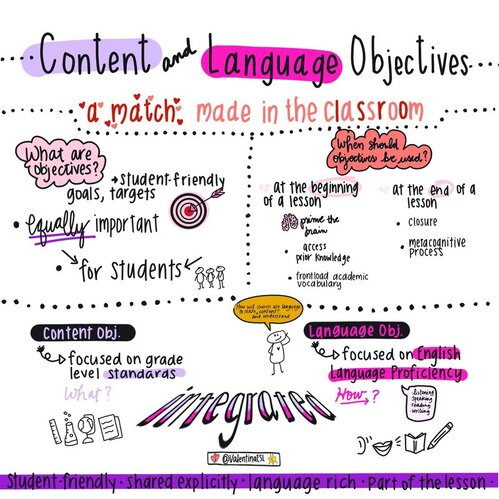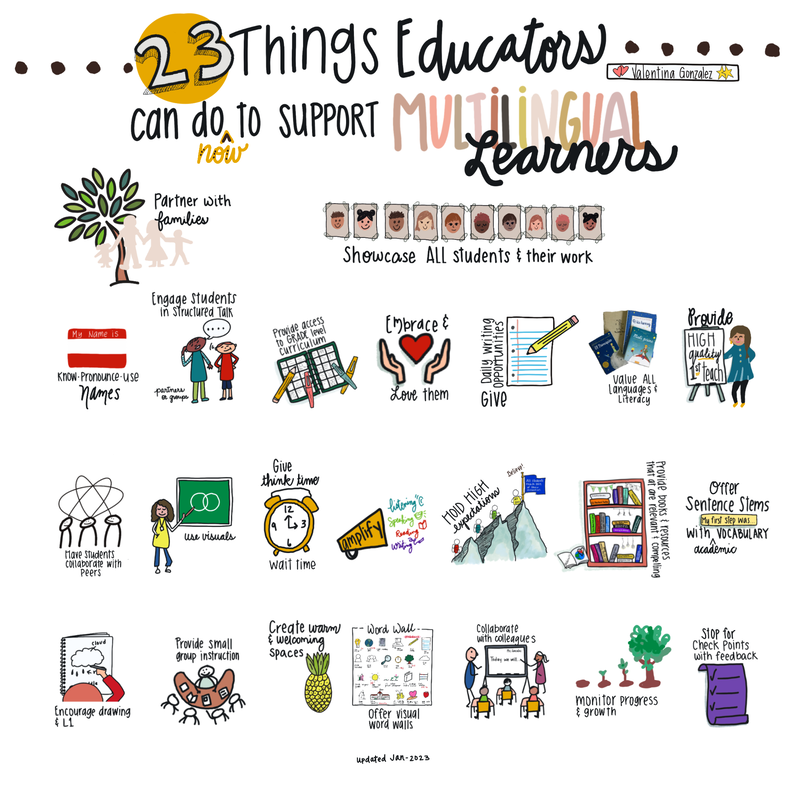|
No. It’s how we engage students with the objectives that makes magic! For years, teachers at the campus where I worked were asked to post objectives clearly on the board. I, like many of my colleagues, did this. I followed the directive given and posted the objectives. As administrators walked by and conducted the obligatory walk-throughs I was always given the pat on the back for having objectives. Yet, they were a bureaucratic check mark in many ways. I complied with what I was asked to do.
Then one amazing day at a workshop the presenter empowered me with how to use objectives with my learners…as a tool for their own learning and it was a magical. Here’s what I learned. Last year this article was shared and greatly loved. This year, I'm adding to it to include one additional support.
Multilingual learners count on us to provide high-quality, comprehensible, and culturally responsive instruction in each lesson in every classroom. Here are 23 practical and efficient ways (in no particular order) we can support multilingual learners as they climb to become our future global leaders. *The terms multilingual, emergent bilingual, and English learner are used interchangeably in this article and also include the acronyms MLs, EBs, and ELs. An EL Teacher’s Perspective on Self (& Professional) ImprovementWhen we pour into ourselves, those around us benefit. This is why becoming the BEST version of yourself is an investment for not only YOU but all of those around you. Our students, families and colleagues deserve the best from us and so do we.
These ideas led me to think about how I will deliberately improve myself for the sake of the English learners, families, and colleagues I work with and here is my plan. I’m nudging you to think about your intentions also. What will you do in 2023? Personalizing Learning & ELLsAs tradition has it, at the start of a new year, many of us reflect on the year that passed and begin to set goals for the year ahead.
This serves as an ideal time for us to help our students set learning goals too! English language learners (ELLs) may feel like they have a lot on their plate. Some are learning about a new country, culture, content and language all at the same time. We can help our ELLs by setting a few language goals so they have a clear view in mind and a path to follow in order to get there. States have varying ways to help us determine the language levels of our ELLs. In Texas, where I live, we have adopted the English Language Proficiency Standards (ELPS) and we use Proficiency Level Descriptors (PLDs) to guide and assess instruction. Many other states have adopted the WIDA English Language Development Standards. States that use WIDA have access to CAN DO Descriptors. These are excellent for goal setting with students and really personalizing instruction. |
Categories
All
|





 RSS Feed
RSS Feed
